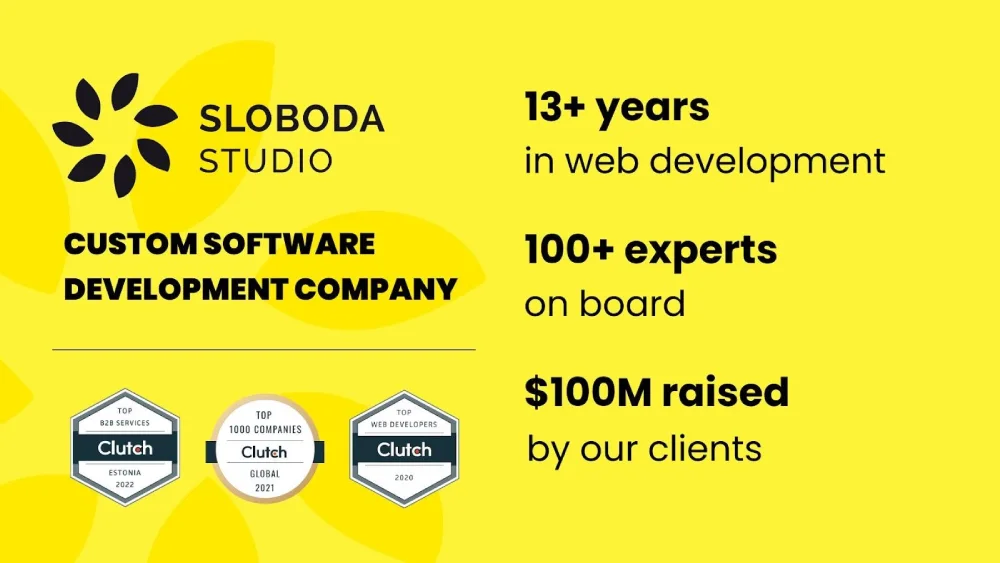Minimum Viable Product (MVP) Development: Building the Foundation for Startup Success
By TOI Staff
June 10, 2023
Update on : June 10, 2023

Startups are often faced with limited resources, time constraints, and high uncertainty when it comes to launching their products or services. In such situations, the concept of Minimum Viable Product (MVP) development comes to the rescue. An MVP is a powerful tool that allows startups to validate their ideas, gather user feedback, and build a solid foundation for long-term success. In this article, we will explore the definition and significance of software development for startups, understand the concept of MVP, define the MVP scope for your startup, discuss MVP testing and validation, and finally, explore scaling and evolving the MVP.
Definition of Minimum Viable Product (MVP)
At its core, an MVP is the most basic version of a product or service that is developed and launched with the primary objective of validating the idea and gathering user feedback. The MVP is designed to test the hypothesis and assumptions behind the startup’s concept in the real market, with real users. It typically consists of the essential features and functionalities necessary to solve the core problem or address the primary needs of the target audience.
Significance of MVP Development for Startup Success
MVP development plays a crucial role in the success of startups for several reasons. Firstly, it helps to minimize the risk associated with launching a full-fledged product by testing the viability of the idea in the market early on. Secondly, it allows startups to gather valuable user feedback, which can be used to make informed decisions and iterate on the product to meet user needs. Thirdly, an MVP helps in reducing time and resource wastage by focusing only on the essential features, thereby accelerating the product development process. Lastly, it enables startups to attract early adopters and investors by demonstrating proof of concept and market demand.
When it comes to finding a company to help you create an MVP, you can check out Sloboda Studio. They have more than 13 years of experience in software development and worked with many clients of different industries like real estate, healthcare, fintech, sustainability, etc.
Contact them to find out more about creating the MVP.
Understanding the Concept of MVP
An MVP follows key principles and objectives, aiming to validate assumptions, address user needs, and deliver a clear value proposition while avoiding complexity.
Key Principles and Objectives of MVP
The development of an MVP is guided by a set of key principles and objectives. The primary objective is to quickly validate the startup’s assumptions and test the market demand for the product or service. The MVP should be designed to provide a clear value proposition to the users and address their pain points or needs. It should be developed with a focus on simplicity, delivering the core functionality, and avoiding unnecessary complexities. Additionally, an MVP should be built using scalable and flexible technologies that can be easily modified and expanded upon based on user feedback.
Common Misconceptions About MVP
There are several misconceptions surrounding MVP development that need to be addressed. One common misconception is that an MVP is a half-baked or low-quality product. In reality, an MVP should be of sufficient quality to provide a meaningful user experience and gather reliable feedback. Another misconception is that an MVP is a one-time release. However, an MVP is an iterative process that involves continuous testing, learning, and refinement. Lastly, some believe that an MVP is only applicable to software products or startups in the technology sector. On the contrary, the concept of MVP can be applied to any industry or product/service offering.
Benefits of Adopting an MVP Approach
Adopting an MVP approach offers several benefits to startups. Firstly, it allows startups to validate their ideas and assumptions early on, reducing the risk of developing a product that has no market demand. Secondly, it helps in optimizing the allocation of resources by focusing on the essential features, thereby saving time and money. Thirdly, an MVP approach promotes a user-centric mindset, as it involves gathering and incorporating user feedback throughout the development process. Lastly, it provides startups with valuable insights into user behavior, market trends, and the competitive landscape, enabling them to make data-driven decisions.
Define MVP Scope for Your Startup
When building an MVP for your startup, it is essential to identify the core problem to solve, determine the essential features based on user needs, and prioritize them through market validation to ensure that your product addresses the critical pain points and resonates with your target audience.
Identifying the Core Problem to Solve
To define the MVP scope for your startup, it is crucial to identify the core problem or pain point that your product or service aims to solve. Conduct market research, engage with potential customers, and gather insights to understand the challenges they face. By focusing on solving a specific problem, you can ensure that your MVP provides a compelling solution and resonates with your target audience.
Determining the Essential Features and Functionalities for Your Business Needs
Once you have identified the core problem, determine the essential features and functionalities that are necessary to address it. Start by listing all the potential features and then prioritize them based on their impact on solving the problem and providing value to users. Consider the feasibility and resource constraints while making these decisions.
Prioritizing Features Based on User Needs and Market Validation
User needs and market validation should be the guiding factors when prioritizing features for your MVP. Conduct user research and gather feedback to understand what features are most important to your target audience. Additionally, validate your assumptions and hypotheses through market testing, such as surveys, interviews, or early product releases. This iterative process helps in ensuring that the MVP focuses on delivering the most valuable features to users.

MVP Testing and Validation
To ensure the success of your Minimum Viable Product (MVP), it is crucial to conduct market testing and gather user validation, analyze data insights, and leverage user feedback and success metrics to refine and improve your product.
Market Testing and User Validation
Once your MVP is developed, it is essential to conduct market testing and gather user validation. Release your MVP to a small group of target users and closely monitor their interactions and feedback. This process helps in understanding how users perceive and engage with the product, identifying areas for improvement, and validating whether the MVP effectively solves their problem.
Data Analysis and Iterating Based on Insights
Collecting and analyzing data is crucial for making informed decisions and iterating on your MVP. Utilize analytics tools to track user behavior, such as user engagement, conversion rates, and retention. This data will provide valuable insights into user preferences, pain points, and areas of improvement. Use these insights to refine your MVP and prioritize future development efforts.
User Feedback and Measuring Success Metrics
User feedback plays a vital role in shaping the direction of your MVP. Encourage users to provide feedback through surveys, interviews, or feedback loops within the product itself. This feedback will help you understand how well your MVP is meeting user needs and whether it is delivering the desired value. Additionally, define success metrics that align with your business goals, such as user acquisition, engagement, or revenue generation, to measure the impact and success of your MVP.
Scaling and Evolving the MVP
To achieve long-term success, it is essential to maintain an iterative mindset, continuously evolve the product, and stay abreast of market trends, user feedback, and the competitive landscape.
Transitioning From MVP to a Full-Fledged Product
As your MVP gains traction and receives positive user feedback, it’s time to transition from an MVP to a full-fledged product. Incorporate the lessons learned from the MVP phase and start expanding the feature set based on user demands and market trends. This transition should be done strategically and iteratively to maintain the core value proposition while addressing the evolving needs of your user base.
Scaling the Product Based on User Feedback and Demand
Scaling your product requires careful consideration of user feedback and demand. Continuously gather user insights, conduct surveys, and analyze data to identify areas for improvement and new features that will enhance the user experience. Prioritize these enhancements based on their impact and alignment with your business goals. Scaling should be a gradual process that keeps the product aligned with user needs while maintaining stability and performance.
Continuously Evolving and Iterating the Product
To ensure long-term success, it is crucial to adopt an iterative mindset and continuously evolve your product. Stay attuned to market trends, user feedback, and competitive landscape. Regularly release updates and new features that provide value to users, address pain points, and differentiate your product from competitors. By continuously iterating and evolving, you can keep your product relevant and adapt to changing market conditions.
Conclusion
Building a Minimum Viable Product (MVP) is a fundamental step for startup success. It allows startups to validate their ideas, gather user feedback, and build a solid foundation for long-term growth. By understanding the concept of MVP, defining the scope, testing and validating, and scaling and evolving the product, startups can effectively navigate the uncertainties of the market and increase their chances of success. Embracing an MVP approach enables startups to optimize resource allocation, reduce risk, and create a product that resonates with users. With careful planning and a user-centric mindset, MVP development can be a game-changer for startups looking to disrupt industries and build sustainable businesses.
Read more: Minimum Viable Product (MVP) Development: Building the Foundation for Startup Success














